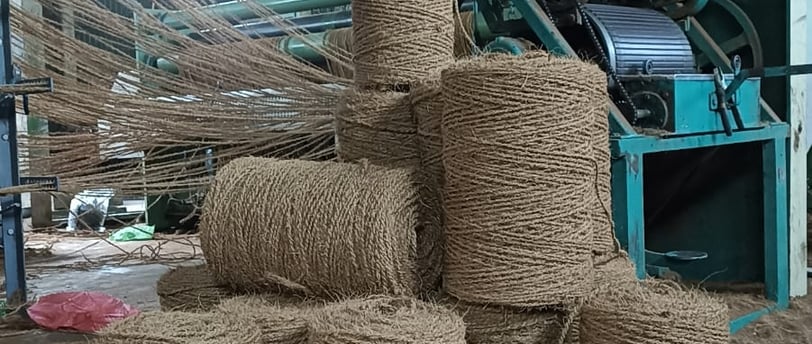The Process of Making Coconut Rope
Coconut rope, also known as coir rope, is a versatile and eco-friendly product made from the fibrous husk of coconuts. This natural rope is widely used in agriculture, horticulture, and various industrial applications due to its durability and resistance to saltwater.


Coconut rope, also known as coir rope, is a versatile and eco-friendly product made from the fibrous husk of coconuts. This natural rope is widely used in agriculture, horticulture, and various industrial applications due to its durability and resistance to saltwater. Here’s a step-by-step guide to the process of making coconut rope.
1. Harvesting and Collecting Coconuts
The process begins with the harvesting of mature coconuts. Once harvested, the coconuts are dehusked to separate the fibrous husk from the nut. The husk, which contains the coir fibers, is the primary raw material for making coconut rope.
2. Retting
Retting is a crucial step in the production of coconut rope. The husks are soaked in water for several months to soften the fibers and make them easier to extract. There are two main types of retting:
Freshwater Retting: Husks are soaked in freshwater ponds or rivers.
Saltwater Retting: Husks are soaked in seawater, which speeds up the retting process but can affect the color and quality of the fibers.
3. Fiber Extraction
After retting, the softened husks are beaten or crushed to separate the coir fibers from the pith and other unwanted materials. This can be done manually or using mechanical decorticators. The extracted fibers are then washed and cleaned to remove any remaining impurities.
4. Drying
The cleaned coir fibers are spread out in the sun to dry. Proper drying is essential to prevent mold and ensure the fibers are strong and durable. The drying process can take several days, depending on the weather conditions.
5. Spinning
Once the fibers are dry, they are spun into yarn. This can be done manually using a spinning wheel or with the help of mechanized spinning machines. The spinning process twists the fibers together to form a strong and cohesive yarn, which is the basic building block of coconut rope.
6. Twisting and Braiding
The spun yarn is then twisted or braided to create the final rope. The number of yarns twisted together and the tightness of the twist determine the thickness and strength of the rope. This step can be done manually or using rope-making machines.
7. Finishing
The finished coconut rope is inspected for quality and consistency. Any defects or weak spots are removed, and the rope is cut into desired lengths. The rope may also be treated with natural oils or other substances to enhance its durability and resistance to environmental factors.
Conclusion
The process of making coconut rope is a blend of traditional techniques and modern innovations. From harvesting and retting to spinning and braiding, each step is crucial in producing a high-quality, durable product. Coconut rope is not only a sustainable and eco-friendly alternative to synthetic ropes but also a testament to the ingenuity and resourcefulness of traditional craftsmanship. Whether used in agriculture, construction, or home decor, coconut rope continues to be a valuable and versatile material.
